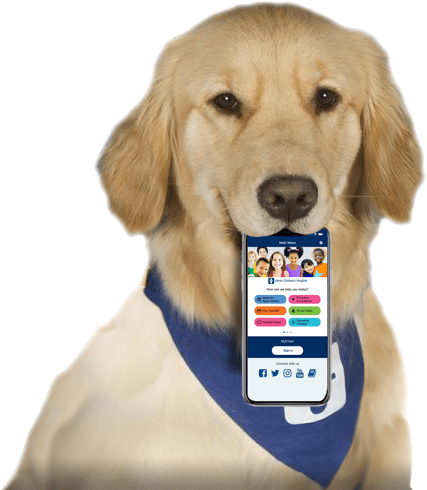Pediatric and Adolescent Urology Care

With extensive training and experience, we focus our care on the special needs of children and their parents − even on potentially sensitive and embarrassing subjects related to genitalia and voiding problems.
Learn more...
Department: 330-376-3332
About Urology
If your child has an illness or disease of the genitals or urinary tract, we have the training and experience to diagnose, treat and manage your child's care. We also know how to examine and treat children in a way that makes them relaxed and cooperative. Our services include:
- Evaluation and management of voiding disorders, vesicoureteral reflux and urinary tract infections that require surgery
- Surgical reconstruction of the urinary tract (kidneys, ureters and bladder), including genital abnormalities, hypospadias and disorders of sex development
- Surgery for groin conditions in childhood and adolescence, such as undescended testes, hydrocele/hernia and varicocele
- Evaluation and surgical management of kidney stone disease
- Surgical management of tumors and malignancies of the kidney, bladder and testis
- Evaluation and management of urological tract problems identified before birth
- Evaluation and management of urinary tract problems associated with neurological conditions like spina bifida
We also use urodynamic tests to show how well the bladder and sphincter muscles work and help explain symptoms such as incontinence, frequent urination, problems starting a urine stream, painful urination, problems emptying the bladder completely, and recurrent urinary tract infections.
Urology, Akron
Akron Children's Pediatric and Adolescent Urology, AkronConsidine Professional Building
215 West Bowery Street
Level 3
Akron, Ohio 44308
Fax: 330-376-2980
Map & directions
More about this location...
Appointments: 330-376-3332
Department: 330-376-3332
Urology, Beachwood
Akron Children's Child and Adolescent Urology, BeachwoodAkron Children's Health Center, Beachwood
3733 Park East Drive
Suite 230
Beachwood, Ohio 44122
Map & directions
More about this location...
Appointments: 330-376-3332
Urology, Boardman
Akron Children's Pediatric and Adolescent Urology, BoardmanLeonard J. Fisher Family Building
6505 Market Street, Building A
Boardman, Ohio 44512
Fax: 330-729-1144
Map & directions
More about this location...
Appointments: 330-376-3332
Urology, Boston Heights
Akron Children's Pediatric and Adolescent Urology, Boston HeightsAkron Children's Health Center, Boston Heights
328 East Hines Hill Road
First floor - 1200ur
Boston Heights, Ohio 44236
Map & directions
More about this location...
Appointments: 330-376-3332
Urology, Mansfield
Akron Children's Pediatric and Adolescent Urology, MansfieldAkron Children's Health Center, Mansfield
1029 South Trimble Road
Mansfield, Ohio 44906
Map & directions
More about this location...
Appointments: 330-376-3332
Urology, Medina
Akron Children's Pediatric and Adolescent Urology, MedinaAkron Children's Health Center, Medina
3778 Medina Road
Medina, Ohio 44256
Map & directions
More about this location...
Appointments: 330-376-3332
Urology, North Canton
Akron Children's Pediatric and Adolescent Urology, North Canton6076 Whipple Avenue Northwest
North Canton, Ohio 44720
Map & directions
More about this location...
Appointments: 330-376-3332
Urology, Warren
Akron Children's Pediatric and Adolescent Urology, Warren5000 East Market Street
Suite 29
Warren, Ohio 44484
Map & directions
More about this location...
Hours
Monday : 8 a.m. - 5 p.m.
Tuesday : 8 a.m. - 5 p.m.
Wednesday : 8 a.m. - 5 p.m.
Thursday : 8 a.m. - 5 p.m.
Friday : 8 a.m. - 5 p.m.
Saturday : 8 a.m. - Noon
Appointments: 330-376-3332
Biofeedback Program for Bedwetting
Biofeedback is a method to help children learn how to control parts of their body that aren’t usually thought to be under conscious control. During biofeedback a computer is used to measure, record and display (or feed back) information about a body process. The purpose of biofeedback is to help children better understand how the body works and how to control it in healthier ways.
Biofeedback is a way to treat and manage daytime wetting, urinary tract infections and reflux (backward flow of urine from the bladder into the kidneys) in children. In pediatric urology biofeedback, children are taught to retrain the pelvic floor muscles. The pelvic floor muscles help the bladder store and empty urine. When the muscles are tight, the bladder stores urine without leaking. When the muscles are relaxed, the bladder can empty. Children who have discoordinated voiding tend to have more tension in their pelvic floor muscles. They have trained their pelvic floor muscles to hold and NOT to relax, causing them to hold urine longer and not to empty their bladder completely. Biofeedback is used to teach children how to relax their pelvic floor so their bladder can empty completely.
During a biofeedback session, stickers are placed on your child’s belly and buttocks. These stickers have wires connected to a computer. The wires send signals to the computer telling it how well the pelvic floor muscles are squeezing and relaxing. This information is turned into picture and sound messages the child can hear and see on the computer. By hearing and seeing these messages, children can know exactly what their muscles are doing. If they change what their muscles are doing, the feedback on the computer will also change. These exercises help children learn to control his or her pelvic floor muscles, even when they are not hooked up to the computer. The overall goal is to improve the child’s ability to store urine and empty his or her bladder more effectively.
Biofeedback is offered as a treatment option for:
- Children who “strain” to void
- Children who do not empty their bladder completely
- Children with recurrent urinary tract infections
- Children who void with a start-stop-start pattern
- Children who void with a prolonged flow without much “force”
- For parents: Ultrasound: Renal (Kidneys, Ureters, Bladder)
- For parents: Voiding Cystourethrogram (VCUG)
- For parents: Ultrasound: Scrotum
- For parents: Abdominal X-Ray Exam
- For parents: A to Z: Hydrocele
- For parents: A to Z: Varicocele (Scrotal Varices)
- For parents: Hernias
- For parents: A to Z: Epididymitis
- For parents: A to Z: Testicular Torsion
- For parents: A to Z: Undescended Testicle
- For parents: A to Z: Phimosis
- For parents: A to Z: Meatal Stenosis
- For parents: A to Z: Hypospadias
- For parents: A to Z: Vesicoureteral Reflux (VUR)
- For parents: A to Z: Ureteropelvic (UP) Junction Obstruction
- For parents: A to Z: Hydronephrosis
- For parents: A to Z: Neurogenic Bladder
- For parents: A to Z: Ectopic Ureter
- For parents: A to Z: Kidney Stones
- For parents: A to Z: Ureterocele
- For parents: A to Z: Myelomeningocele
- For teens: Hernias
- For parents: Hernias
- For teens: Hernias
- For parents: Kidney Problems in Childhood
Conditions and Treatments:
Voiding dysfunction, bedwetting, enuresis, bladder exstrophy, cloacal exstrophy, epispadias, hypospadias, undescended testicle, vesicoureteral reflux, adrenal disorders, ambiguous genitalia, anorectal malformations, bedwetting, dysfunctional voiding, exstrophy-epispadias , hydrocele, hypospadia, kidney stones, posterior urethral valves, prenatal hydronephrosis, recurrent urinary tract infections, testicular torsion, ureterocele, vesicoureteral reflux, voiding disorders





























